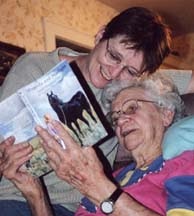Freedom to Write Badly
In order to write, we must first overcome the fear of writing poorly.
As Julia Cameron says in The Right to
Write, “Perfectionism is a primary writer’s block.”
Have you ever told
yourself, “I’m not a writer,” when your attempts fell short of your vision or
failed to measure up to the prose of your favorite authors? That, according to
Anne Lamott in her book, Bird by Bird, is because you never see the masters’ first drafts. She declares
that all good writers rewrite; that their first drafts are far from what you
finally see in print. William Zinnser, in On
Writing Well, gives an example of a fourth of fifth draft of a page from
his book. He shows his proofreading marks, which, as he says, make it look like
a first draft. In his book On Writing,
Stephen King gives an example of his raw writing, the kind he feels free to do
with the “door shut. It’s the story undressed, standing up in nothing but its
socks and under shorts.” After a lot of editing and rearranging, he has a
revised copy that is, “the story putting on its clothes, combing its hair,
maybe adding a small dash of cologne.” Then he’s “ready to open the door and
face the world.”
In order for you to be
free to write badly, free from worry about sentence structure, plotting, or
mechanics, begin free-form writing exercises with no concern for rules. Free your muse by removing expectations for doing it “right.” It’s
important that you first write from your heart and imagination without
analyzing and correcting as you go. Do not judge; just write.
Many of the exercises in
this workshop are based on “free-form” writing. That's where you write
whatever enters your mind, with no thought of structure, grammar, spelling or
coherence. This form of writing is meant to awaken your muse and connect you
with memories and ideas that are deep within your psyche. It is not meant to be
a grammatically correct, astute, or well ordered. Trust the process. It works.
Even if you feel you don’t have anything to write, by keeping the pen moving,
you will invite the muse as you quiet the critic.
“Go ahead and make big scrawls and mistakes.
Use up lots of paper. Perfectionism is a mean, frozen form of ideals, while
messes are the artist’s true friends. What people forgot to mention when we
were children…was that we need to make messes in order to find out who we are
and why we are here—and by extension, what we’re supposed to be writing.” — Lamott

